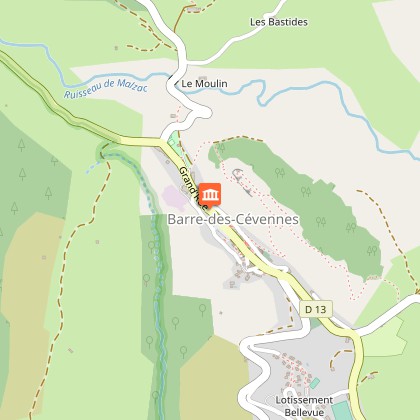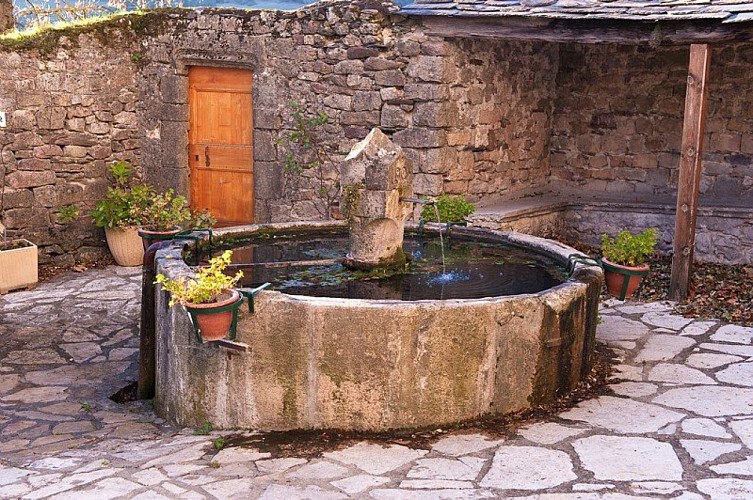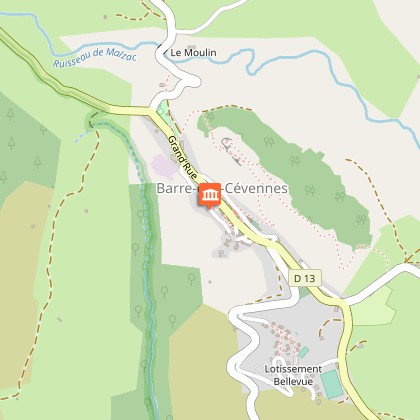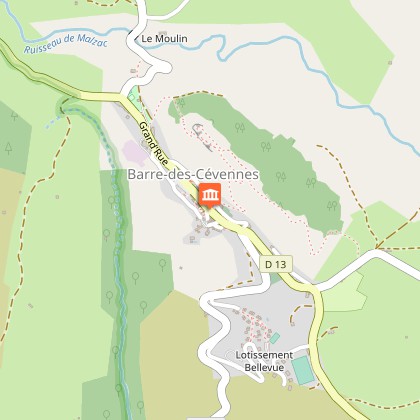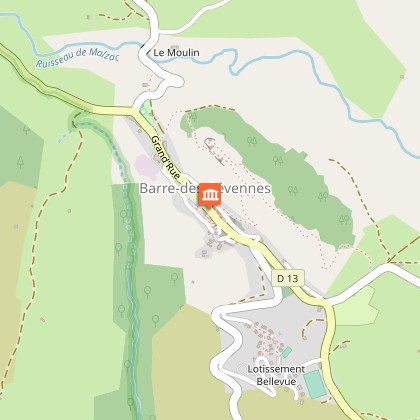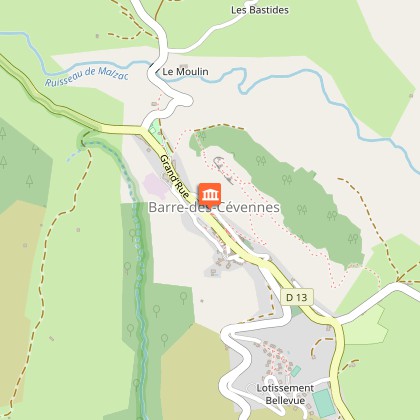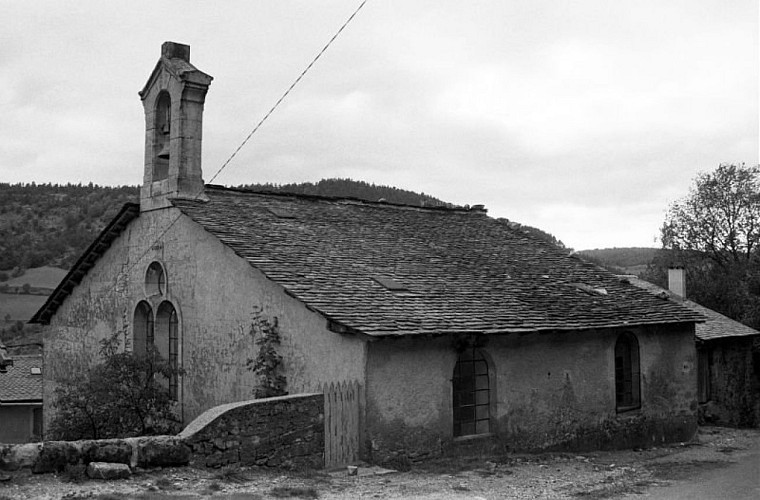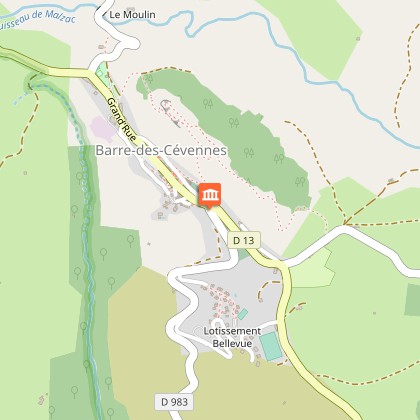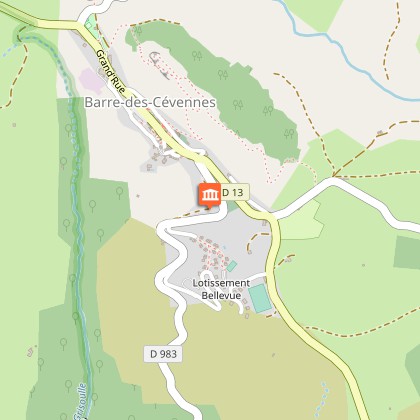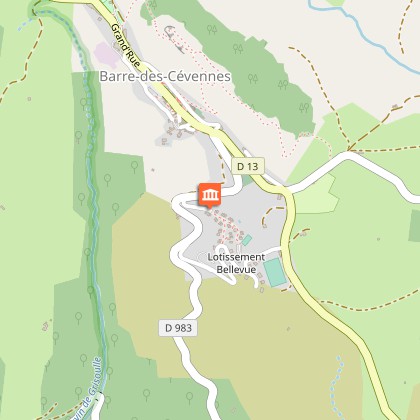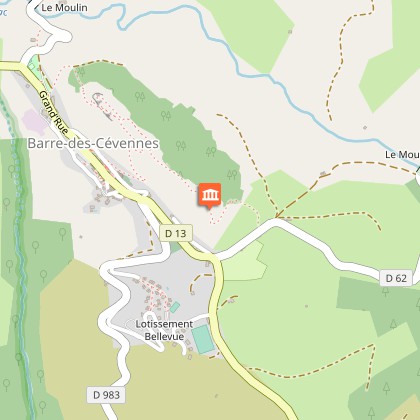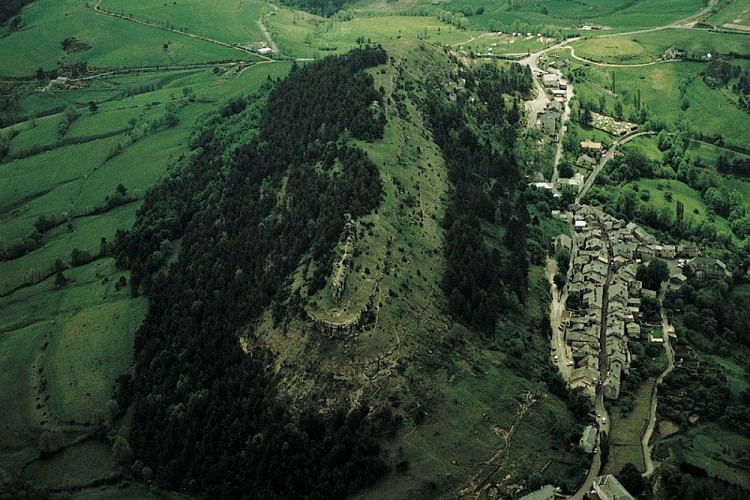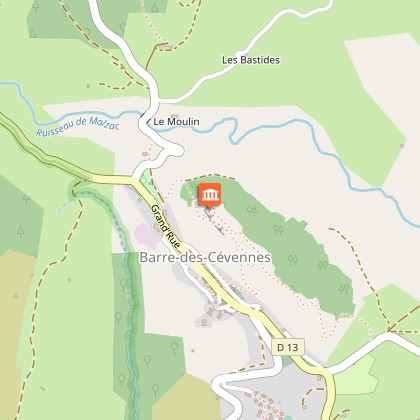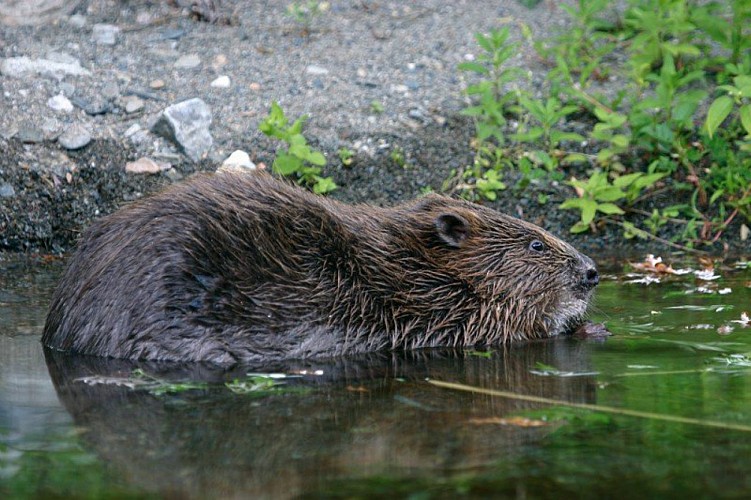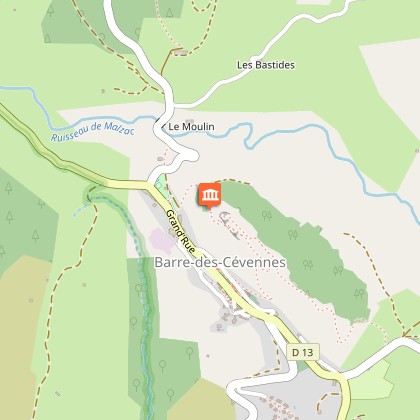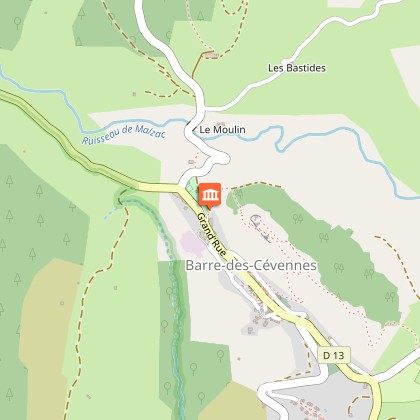Alert
Alerts
Barre-des-Cévennes


IGN cards
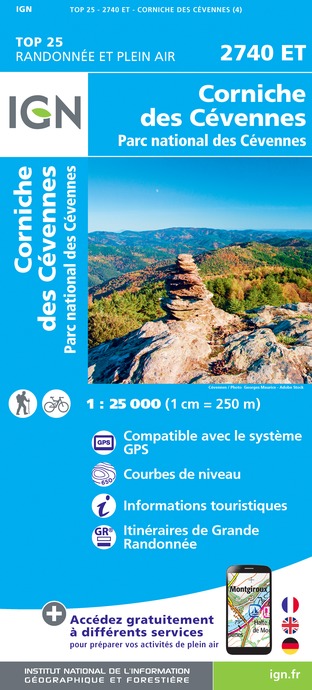


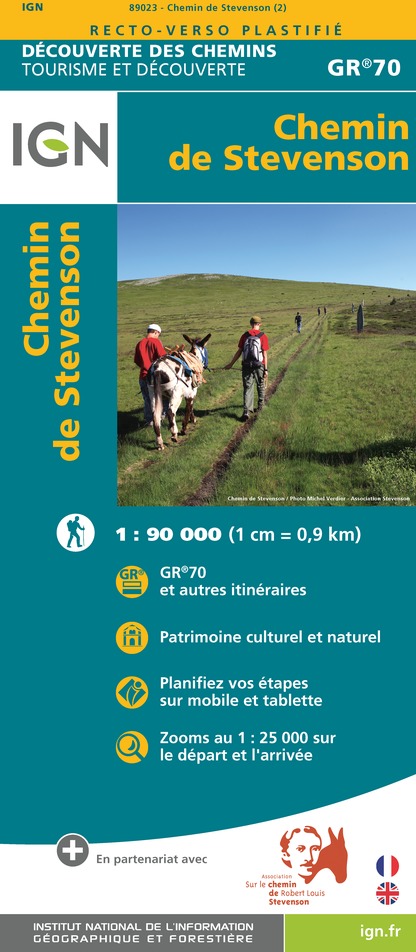


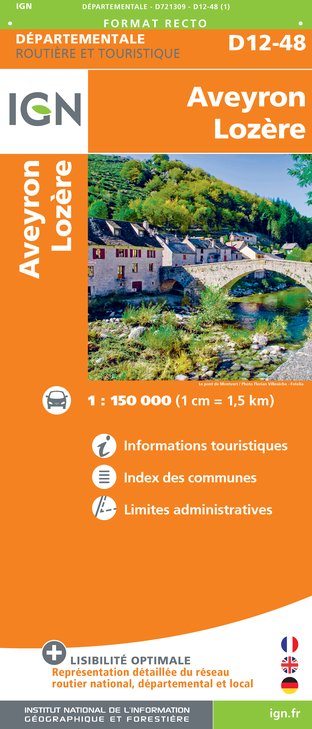

Description
This trail showcases the different aspects of Barre-des-Cévennes, from the lanes of the old village to the panoramic viewpoints.
A few clarifications:• A few dozen metres after Point 6, take the stairs on the right.• Between Points 9 and 10, the path may be closed by two barriers. Please be sure to close them again after yourself.• Steep uphill section after Point 13.• At Point 16, do not climb the rocks – risk of falling. • Steep downhill section after Point 18.
Technical Information
Altimetric profile
Starting point
Points of interest
Additional information
Departure
Public weigh-station (poids public) as you enter Barre-des-Cévennes
Arrival
Place des Ayres
Ambiance
In the shelter of the Castelas, the facades of Barre-des-Cévennes line up, reminding us of its past as a rich and lively small town. In fact, the village is located at the very hinge of two different but complementary regions, and controls one of the most frequent crossing points between the Lower and Upper Cévennes. The trail leads you from gardens to fountains, from the temple (Protestant church) to the Catholic church, to the old fairgrounds and then onto the heights, where you can enjoy exceptional panoramic views onto the scenery of the Cévennes National Park.
Access
Barre-des-Cévennes on the D 907 and then D 9 from Florac; after Nozières hamlet, take the D 983 on the left.
Advised parking
On the right as you enter the village coming from the Col du Rey pass
Advice
This trail has rather steep slopes (60%) and cliff sections that are difficult for people with walking difficulties. Children must be kept under parents' supervision. Horse-riding or mountain-biking are not allowed on or adapted to discovery trails.
Data author

